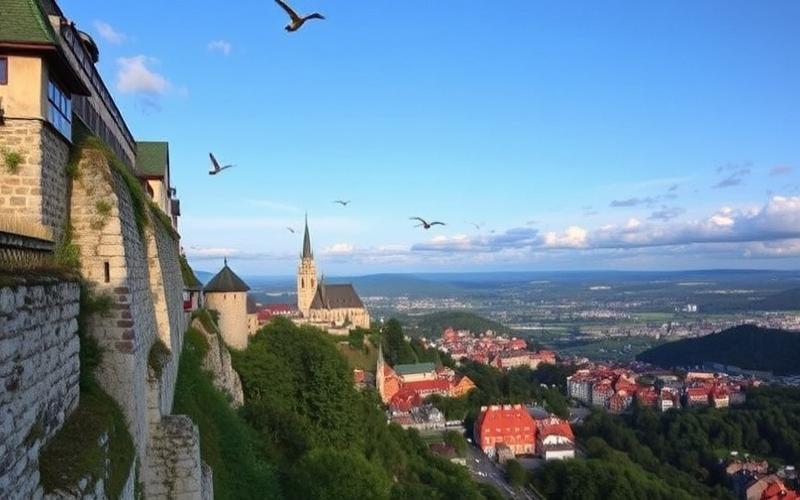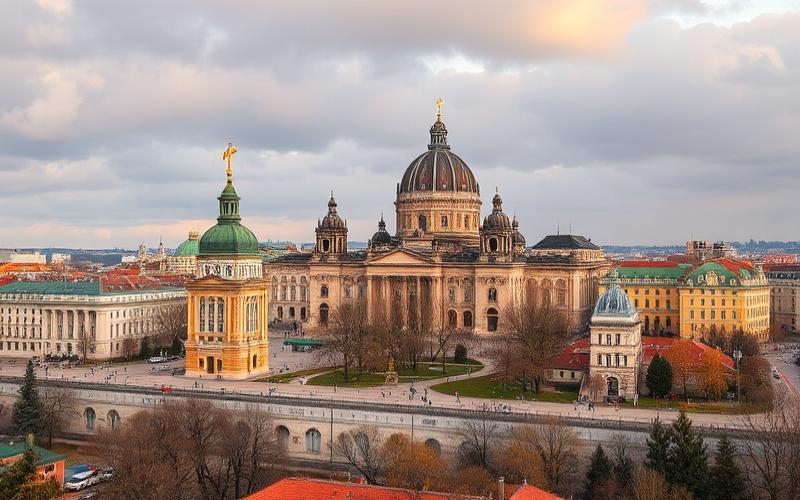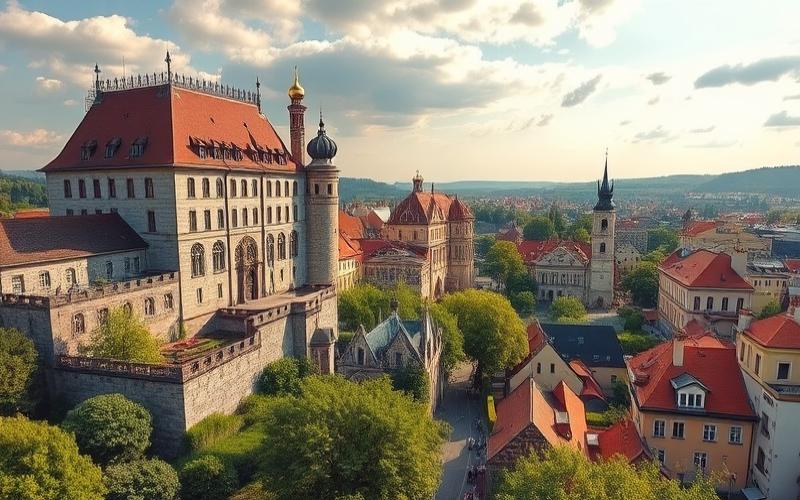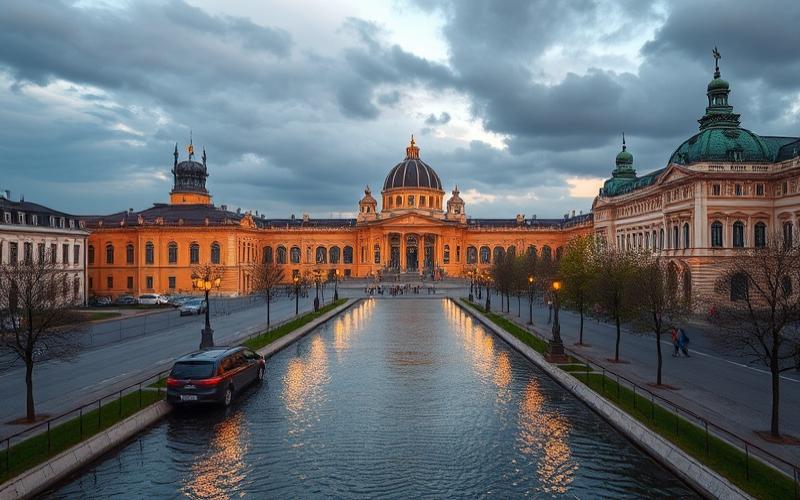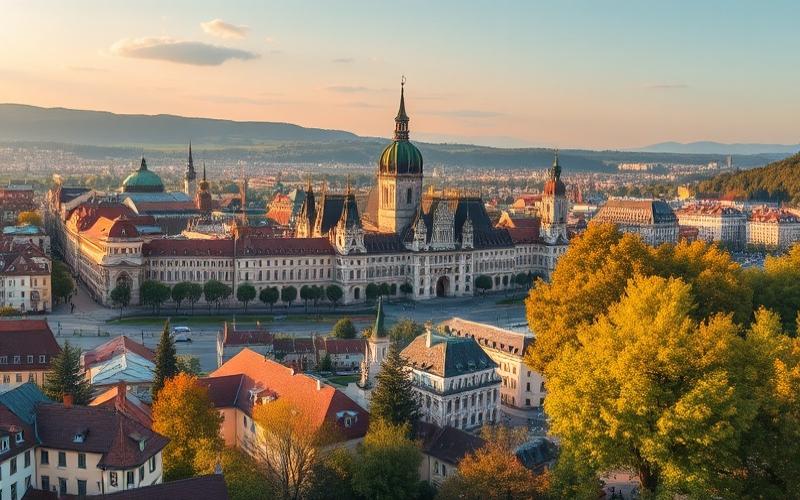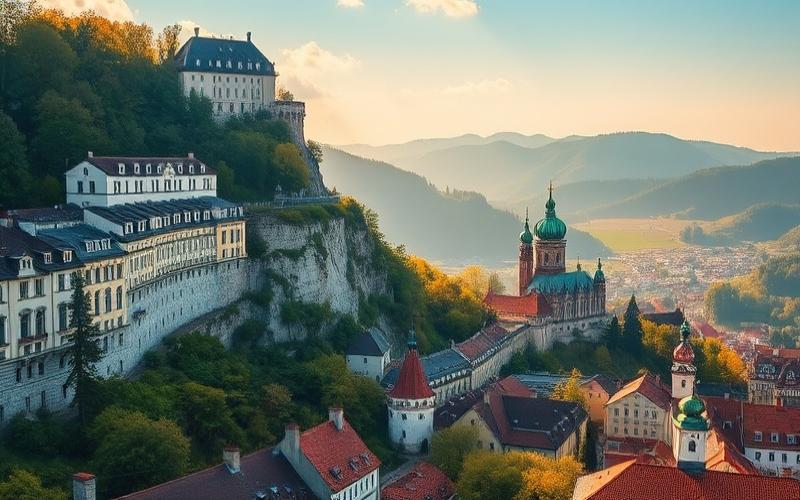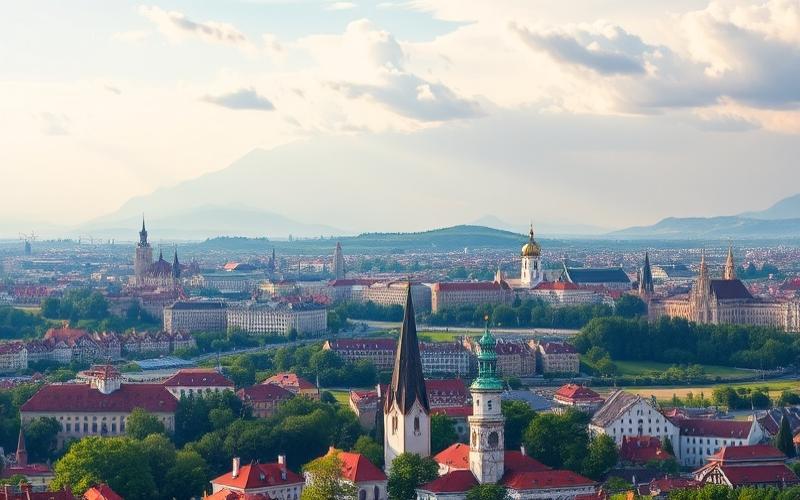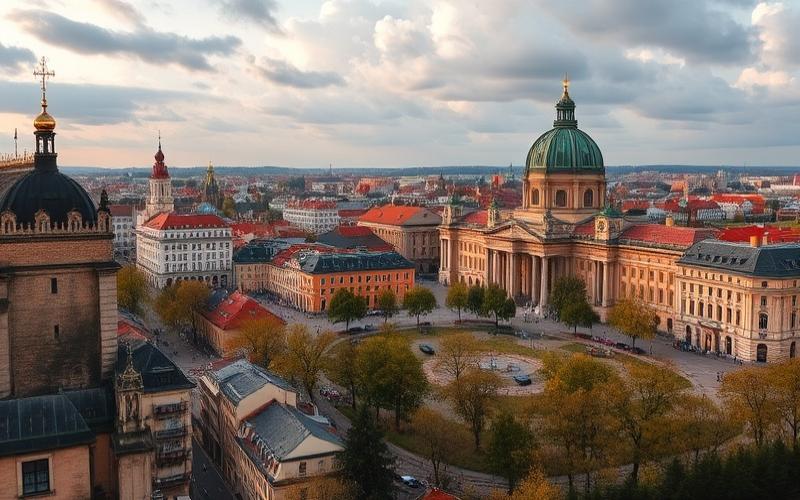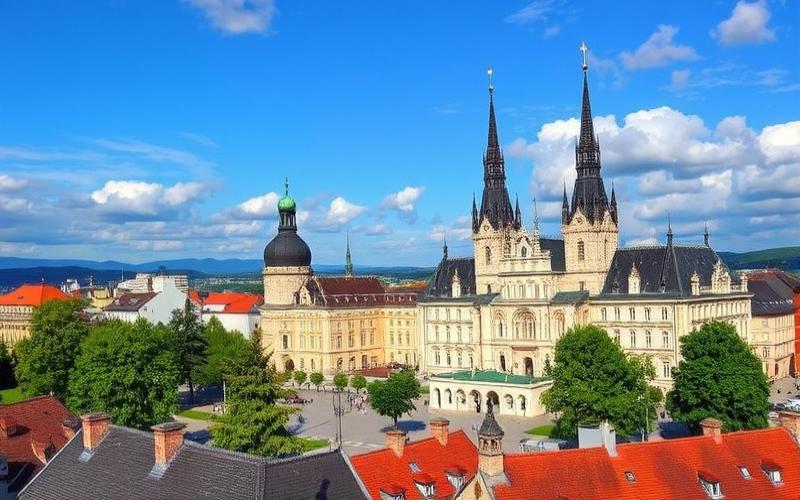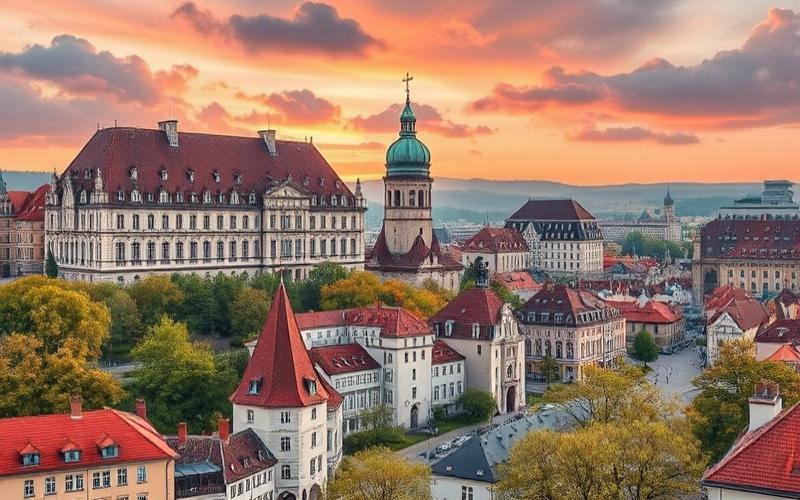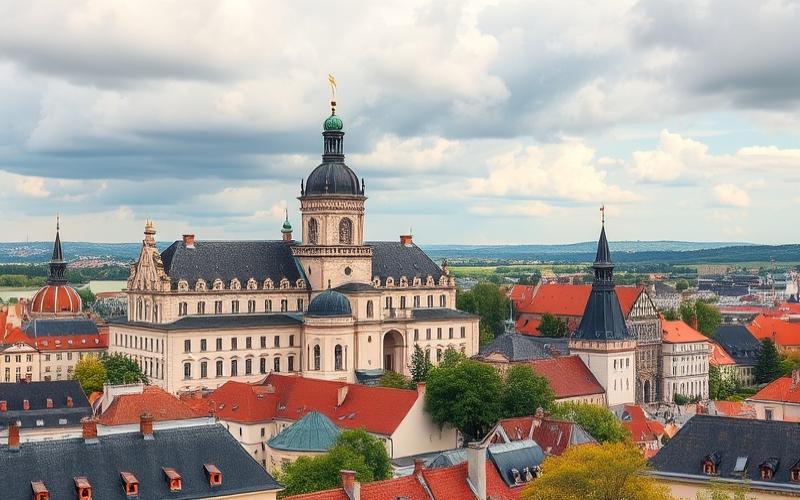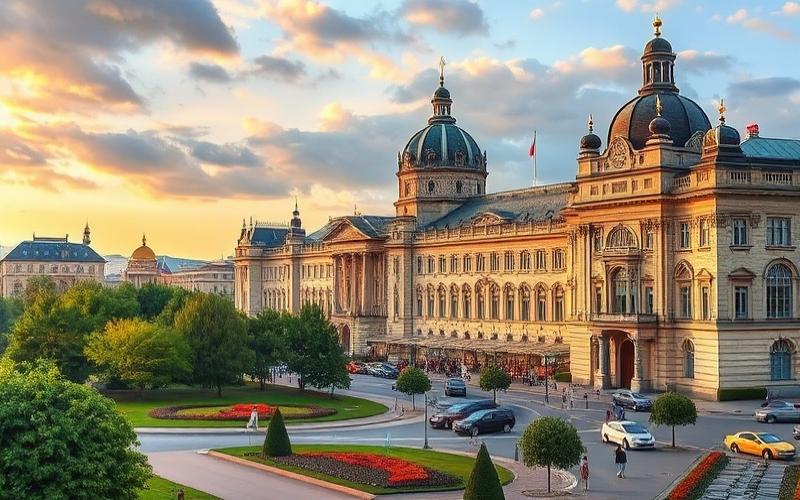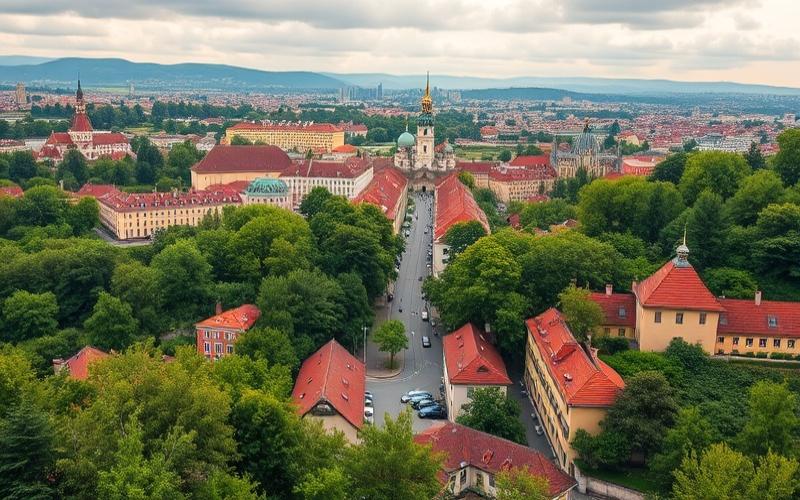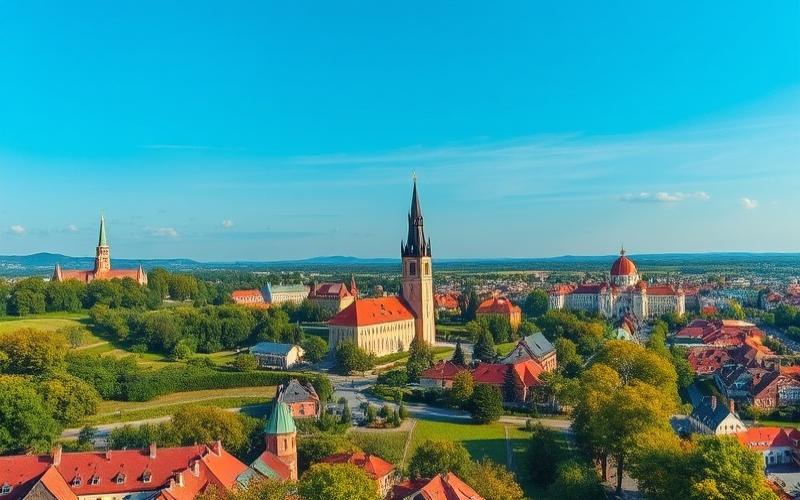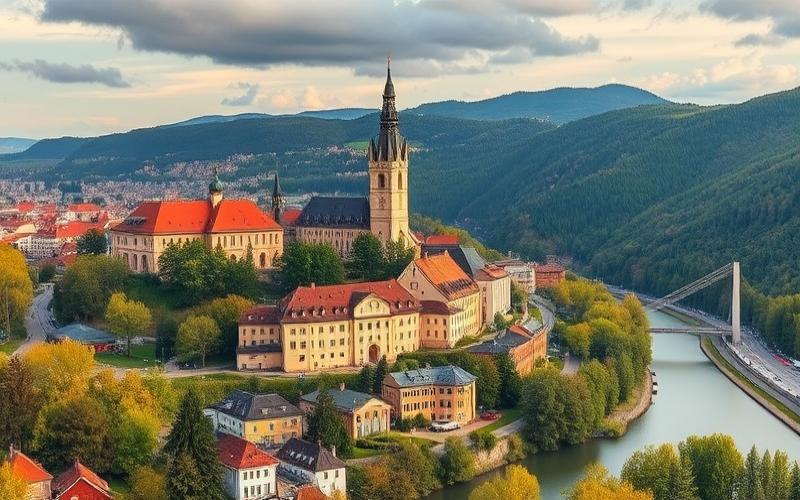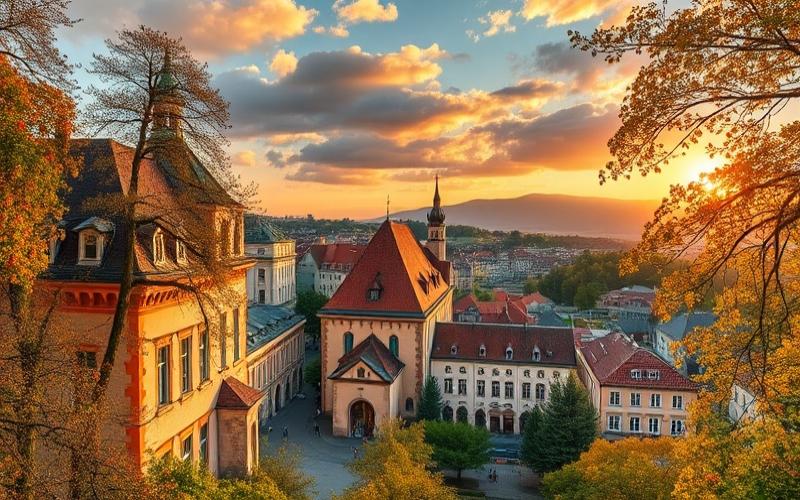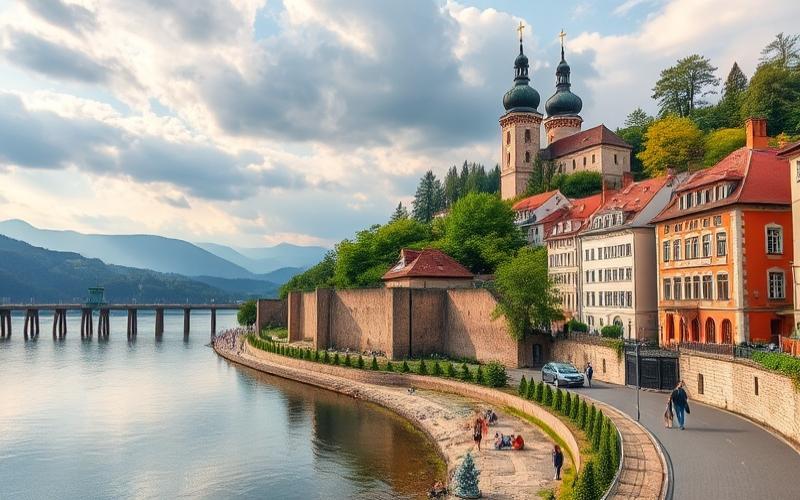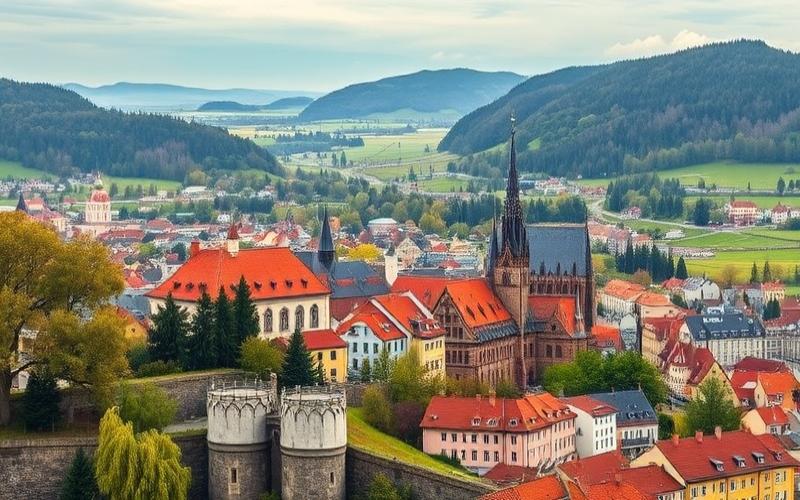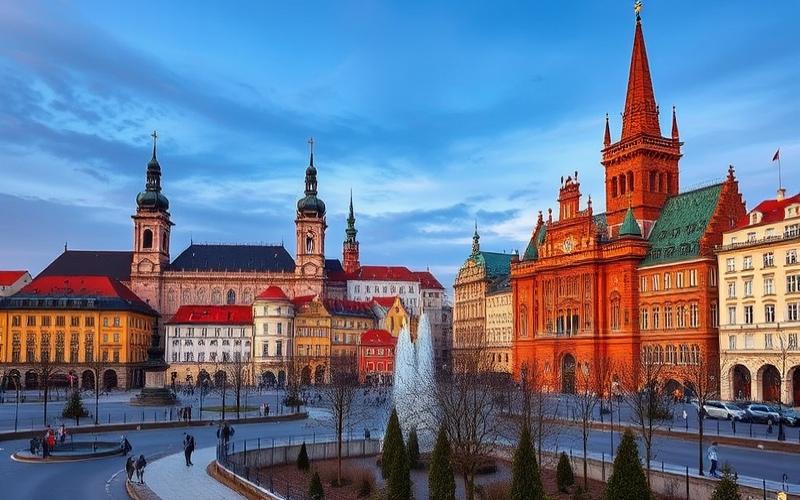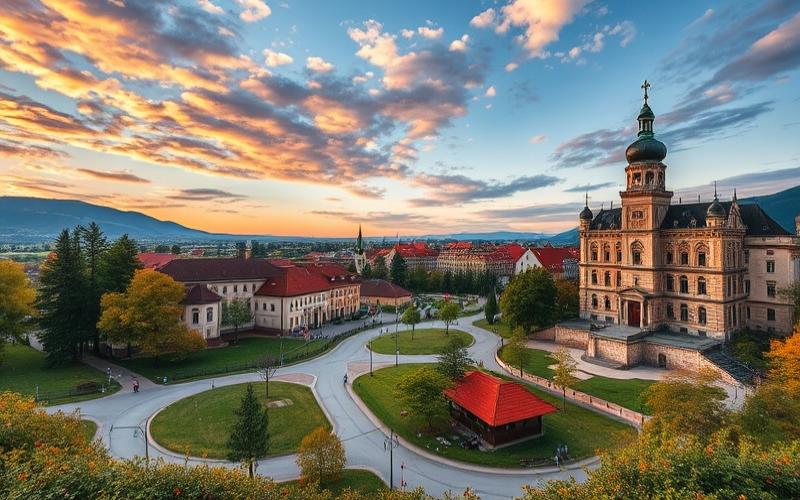
 Published on and written by Cyril Jarnias
Published on and written by Cyril Jarnias
Poland, a Central European country at the heart of European history, has undergone numerous fascinating political and cultural transformations. From its medieval origins, marked by the establishment of the kingdom in the 10th century, to its crucial role during World War II, this nation has managed to assert itself despite successive invasions and occupations.
Navigating through the centuries, Poland forged a unique identity, blending resilience and creativity, giving rise to vibrant cultural and intellectual movements. Demystifying its past offers us a window into the complexity of its heritage, from the impact of powerful 16th-century reforms to contemporary transformations after the fall of the Iron Curtain.
This journey through Polish history promises to reveal an exciting narrative, woven with struggles, rebirths, and innovations.
The Beginnings of Poland Through the Centuries
The first mention of Poland in historical chronicles appears in 10th-century sources, notably through the account of traveler Ibrahim ibn Ya’qub around 960, who described a structured political organization based on fortresses (*castra*) and an already hierarchical society. The earliest major chronicles, such as that of Gallus Anonymus (early 12th century) and Wincenty Kadłubek’s *Chronica Polonorum* (late 12th-early 13th century), constitute the primary sources on Poland’s beginnings, tracing the country’s history from founding legends to the first historical rulers.
| Event / Fact | Period / Date | Impact and European Context |
|---|---|---|
| First mentions (chronicles, Arab travelers) | 9th-10th centuries | Integration of Poland into medieval exchange and diplomatic networks. |
| Piast Dynasty (Mieszko I) | ca. 960-992 | Foundation of the Polish state, assertion against German, Czech, and Hungarian neighbors. |
| Christianization (Baptism of Mieszko I) | 966 | Integration into Latin Christendom, transformation of social and political structures, legitimization of power. |
| Relations with neighbors (Holy Roman Empire, Bohemia, Hungary, Kievan Rus’) | 10th-14th centuries | Alliances, wars, exchanges, cultural and institutional influences. |
| Union with Lithuania (Union of Krewo) | 1385 | Creation of a major political power in Eastern Europe, model of a multinational state. |
The Piast dynasty, founded by Mieszko I, played a decisive role in the formation of the Polish state. Mieszko I centralized power around the Warta River basin, established an administrative and military system based on *castra*, and initiated the country’s Christianization. His son, Bolesław I the Brave, continued this work, strengthening the kingdom’s independence, symbolized by the royal coronation in 1025.
The Christianization of 966
The Christianization of 966 marked a major turning point: the baptism of Mieszko I, under Bohemian influence, allowed Poland to escape the religious and political domination of the Holy Roman Empire and join the community of Christian states in Europe. This conversion transformed Polish society: emergence of an ecclesiastical hierarchy, development of a Latin written culture, institutionalization of feudal structures, and strengthening of the prince’s authority, now legitimized by the Church.
Main Effects of Christianization and State Building
- Centralization of power around the Piast dynasty.
- Creation of bishoprics and ecclesiastical structures independent of neighboring powers.
- Strengthening of social and political cohesion.
- Introduction of written law, currency, and heraldic codes.
- Stimulation of economic and cultural exchanges with the Christian West.
Relations with neighboring powers (Holy Roman Empire, Bohemia, Hungary, Kievan Rus’) oscillated between alliances, conflicts, and mutual influences. The coronation of Bolesław I the Brave in 1025, following the Congress of Gniezno meeting with Emperor Otto III, symbolized the recognition of Polish independence on the European stage. These interactions contributed to the gradual definition of borders and the assertion of a distinct political and cultural identity.
Until the union with Lithuania in the 14th century, Poland experienced periods of feudal fragmentation, invasions (notably Mongol), but also institutional strengthening around Kraków and the monarchy. The Union of Krewo (1385), sealing the dynastic alliance with Lithuania, gave birth to a major political power in Central and Eastern Europe, marking the culmination of several centuries of state-building and openness to medieval Europe.
Summary of Key Factors for the Formation of Polish Borders and National Identity
- Centralization of power by the Piast dynasty.
- Christianization and ecclesiastical autonomy.
- Assertion against neighbors through diplomacy and war.
- Fusion of local Slavic traditions with Western models.
- Construction of a multinational state after the Polish-Lithuanian union.
The history of Poland’s beginnings fully fits into the context of the formation of European medieval states, marked by Christianization, monarchical centralization, territorial competition, and the quest for recognition within Latin Christendom.
Good to know:
The first mention of Poland in historical chronicles dates back to the 10th century with the Piast dynasty under Mieszko I, who made the Christianization in 966 a pivotal moment to integrate Poland into the European Christian world and stabilize relations with its neighbors, thus laying the foundations of the Polish state, whose identity and borders were refined until the union with Lithuania in the 14th century.
Transformation of the Kingdom: From Piast to the Republic
The transformation of the Kingdom of Poland from the Piast dynasty to the creation of the Polish-Lithuanian Commonwealth is a complex process marked by significant political and social events.
The Piast Dynasty
The Piast dynasty, the first royal family of Poland, played a crucial role in the development of the Polish state. The main rulers include:
- Mieszko I: First historical duke of Poland, he unified the Slavic tribes and introduced Christianity in 966.
- Bolesław I the Brave: First king of Poland, he strengthened internal administration and expanded the kingdom’s borders.
- Casimir III the Great: Last Piast king, he reformed the legal system and promoted education.
These rulers contributed to the consolidation of the Polish state, its territorial expansion, and its integration into the European community.
End of the Piast Dynasty and Emergence of the Jagiellonians
The Piast dynasty ended with the death of Casimir III in 1370. Key events include:
- Succession of Louis I of Hungary: He ruled briefly before being replaced by Jadwiga and Władysław II Jagiełło.
- Union of Jadwiga and Władysław II: This union marked the beginning of the Jagiellonian dynasty and the union of Poland and Lithuania.
Union of Lublin and the Polish-Lithuanian Commonwealth
The Union of Lublin in 1569 created the Polish-Lithuanian Commonwealth, uniting Poland and the Grand Duchy of Lithuania. Political and social changes include:
- Political structure: The Commonwealth was an elective monarchy with a king chosen by the nobility.
- Administrative system: A government system based on the nobility, with local and national diets (parliaments).
| Characteristics | Description |
|---|---|
| Political structure | Elective monarchy |
| Administrative system | Local and national diets |
| Society | Dominated by the nobility |
Internal and External Challenges
The Polish-Lithuanian Commonwealth faced internal challenges such as the fragmentation of power and struggles between noble factions. External challenges include pressures from neighboring powers like Russia, Austria, and Prussia.
Long-Term Impact
This transformation had a lasting impact on Polish national identity, strengthening the sense of unity and shared culture despite political and social divisions. The Polish-Lithuanian Commonwealth also left an institutional and political legacy that continues to influence modern Poland.
Good to know:
The Union of Lublin in 1569 formed the Polish-Lithuanian Commonwealth, merging the Kingdom of Poland and the Grand Duchy of Lithuania into a single entity with a complex political system, thus fostering the development of a distinct Polish national identity. The reigns of Casimir III the Great and Władysław II Jagiełło shaped the Polish state, but the rise of the Jagiellonian dynasty marked a decisive turn towards an elective monarchy.
Impact of Invasions and Partitions on Polish Identity
The major invasions suffered by Poland deeply marked its national identity. Among the most significant are:
- The Swedish invasions, notably the “Deluge” (1655-1660), where Sweden, taking advantage of a Poland weakened by internal conflicts, invaded and plundered the country. The Swedish armies, known for their brutality, desecrated churches and monasteries, leading the population to associate this war with a religious crusade. Resistance, such as that at the Jasna Góra Monastery, became a symbol of attachment to faith and homeland.
- The Russian invasions, often allied with other powers, had a lasting impact, particularly during the partitions of Poland in the 18th century. The Russians imposed their political and cultural influence, attempting to Russify certain territories.
- The Prussian and Austrian invasions also played a decisive role, notably during the partitions, with each of the three empires imposing its administration, language, and customs on the annexed territories.
| Year | Partitioning Powers | Main Consequences |
|---|---|---|
| 1772 | Russia, Prussia, Austria | Loss of about 1/3 of territory, first efforts of Germanization and Russification |
| 1793 | Russia, Prussia | Further reduction of territory, intensification of cultural suppression |
| 1795 | Russia, Prussia, Austria | Disappearance of the Polish state, political erasure, widespread foreign administration |
These events had profound effects on Polish culture and identity:
- Language and customs: The occupying authorities attempted to impose their language and culture, but the Polish language was preserved in the private sphere and by the Catholic Church, a central institution of cultural resistance.
- National sentiment: The absence of a state strengthened attachment to the Polish nation, perceived as a cultural and historical community beyond political borders. This identity was expressed through literature, music, and clandestine education.
Examples of cultural figures who maintained national unity:
- Adam Mickiewicz (poet), whose works exalted freedom and Polish history, playing a central role in forming national consciousness.
- Frédéric Chopin (composer), who integrated Polish folk motifs into his music, a symbol of the Polish soul.
- Józef Ignacy Kraszewski, a novelist engaged in preserving national memory through his historical writings.
- Eliza Orzeszkowa and Henryk Sienkiewicz, writers who emphasized moral resistance and the dignity of the people.
Polish resilience manifested through:
- Oral and written transmission of traditions despite censorship.
- Organization of clandestine schools teaching the national language and history.
- The role of the Church in safeguarding Polish identity.
List of impacts on European perception and independence movements:
- Poland was perceived as a “victim of the great powers,” arousing sympathy among European intellectual circles.
- Poles actively participated in European revolutions of the 19th century (e.g., Great Emigration), symbolizing the struggle for freedom and self-determination.
- The persistence of national sentiment allowed for the rebirth of the Polish state in 1918.
The history of invasions and partitions forged a Polish identity centered on resilience, culture, and collective memory, which remains a pillar of the contemporary nation.
Good to know:
The Swedish, Russian, and Prussian invasions deeply marked Polish identity, but it was during the 18th-century partitions that cultural resistance intensified, with figures like Adam Mickiewicz and Fryderyk Chopin playing a crucial role in maintaining national sentiment. The legacy of these upheavals also shaped Poland’s perception in Europe, while fueling independence movements in the 19th and early 20th centuries.
Disclaimer: The information provided on this website is for informational purposes only and does not constitute financial, legal, or professional advice. We encourage you to consult qualified experts before making any investment, real estate, or expatriation decisions. Although we strive to maintain up-to-date and accurate information, we do not guarantee the completeness, accuracy, or timeliness of the proposed content. As investment and expatriation involve risks, we disclaim any liability for potential losses or damages arising from the use of this site. Your use of this site confirms your acceptance of these terms and your understanding of the associated risks.

